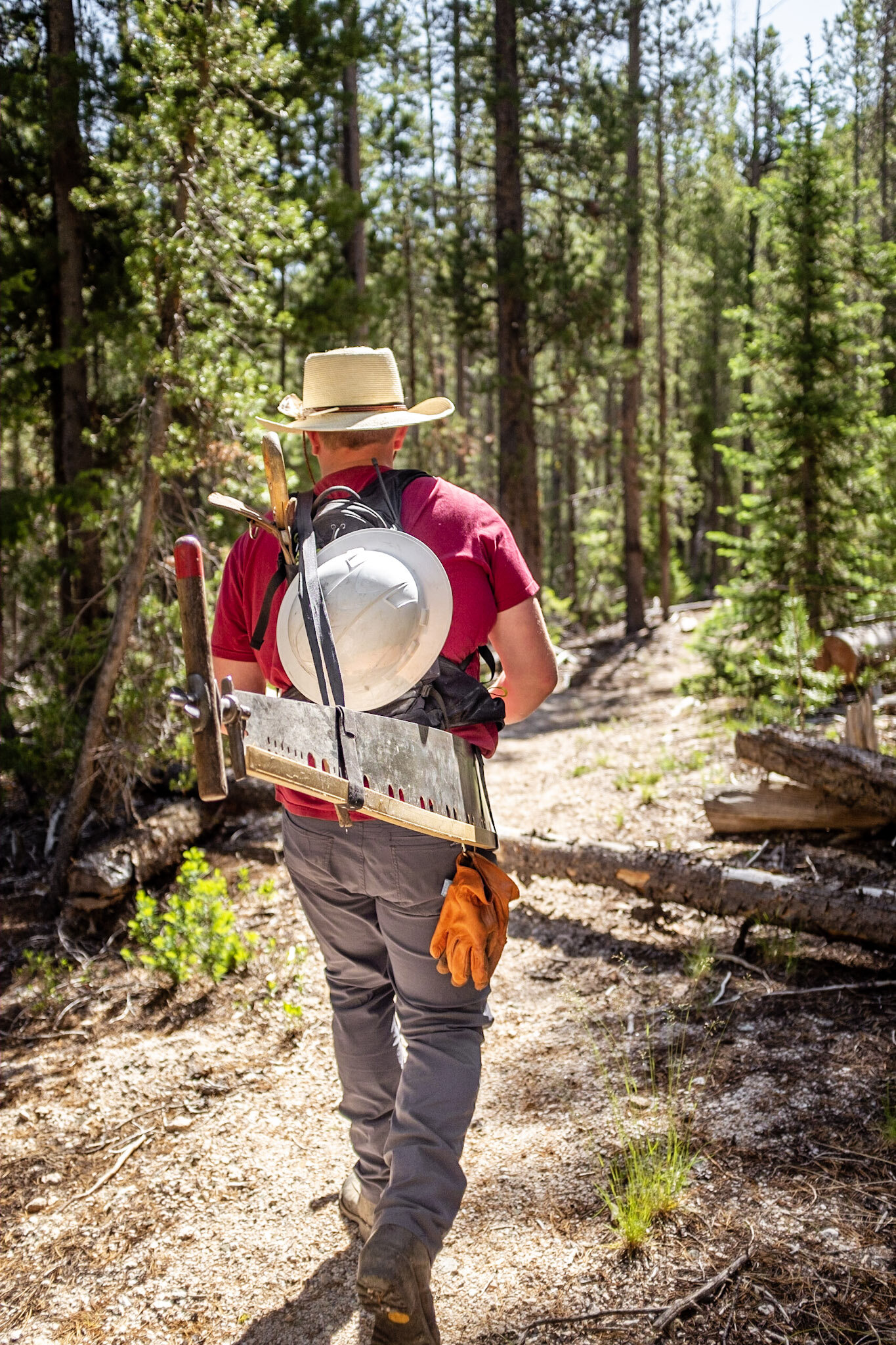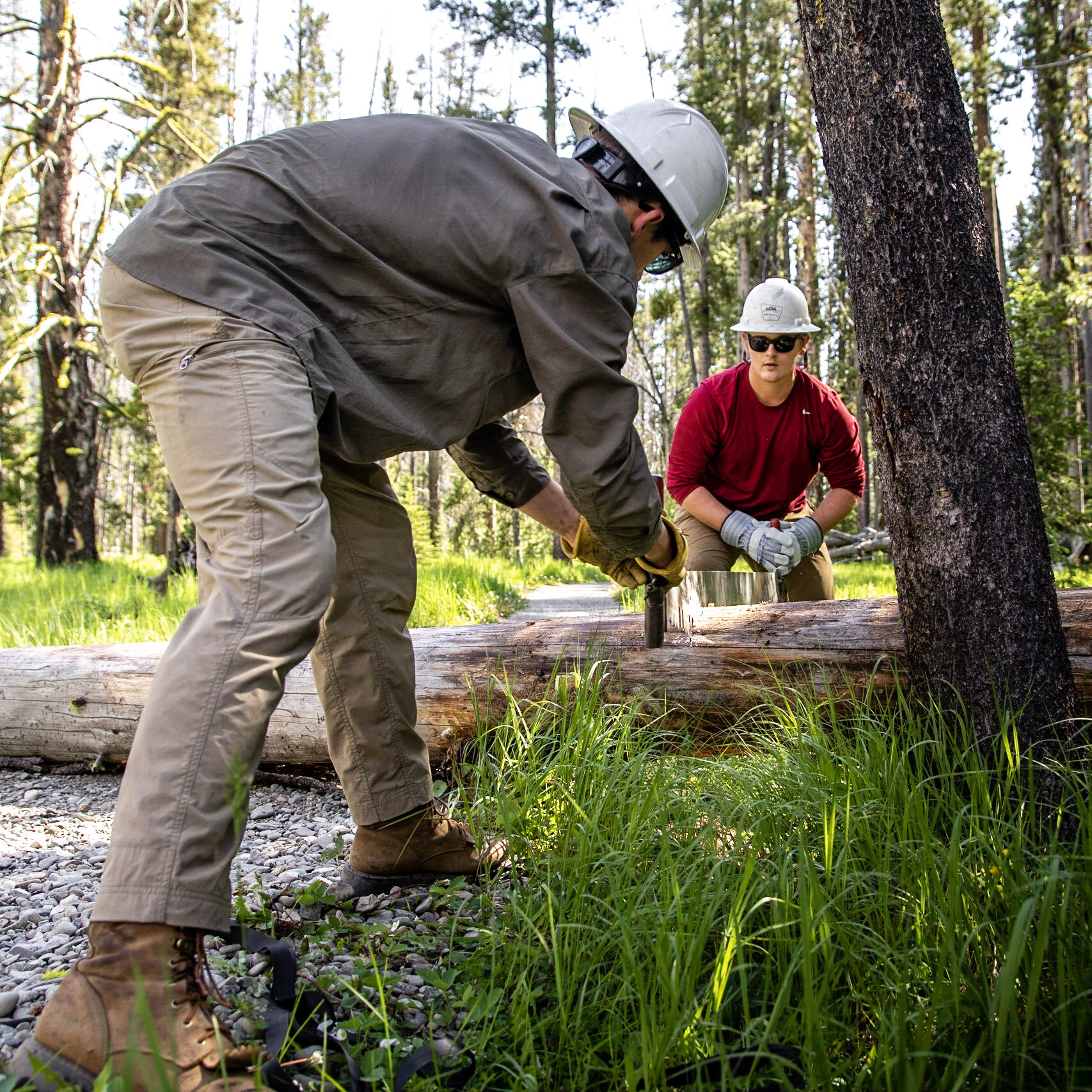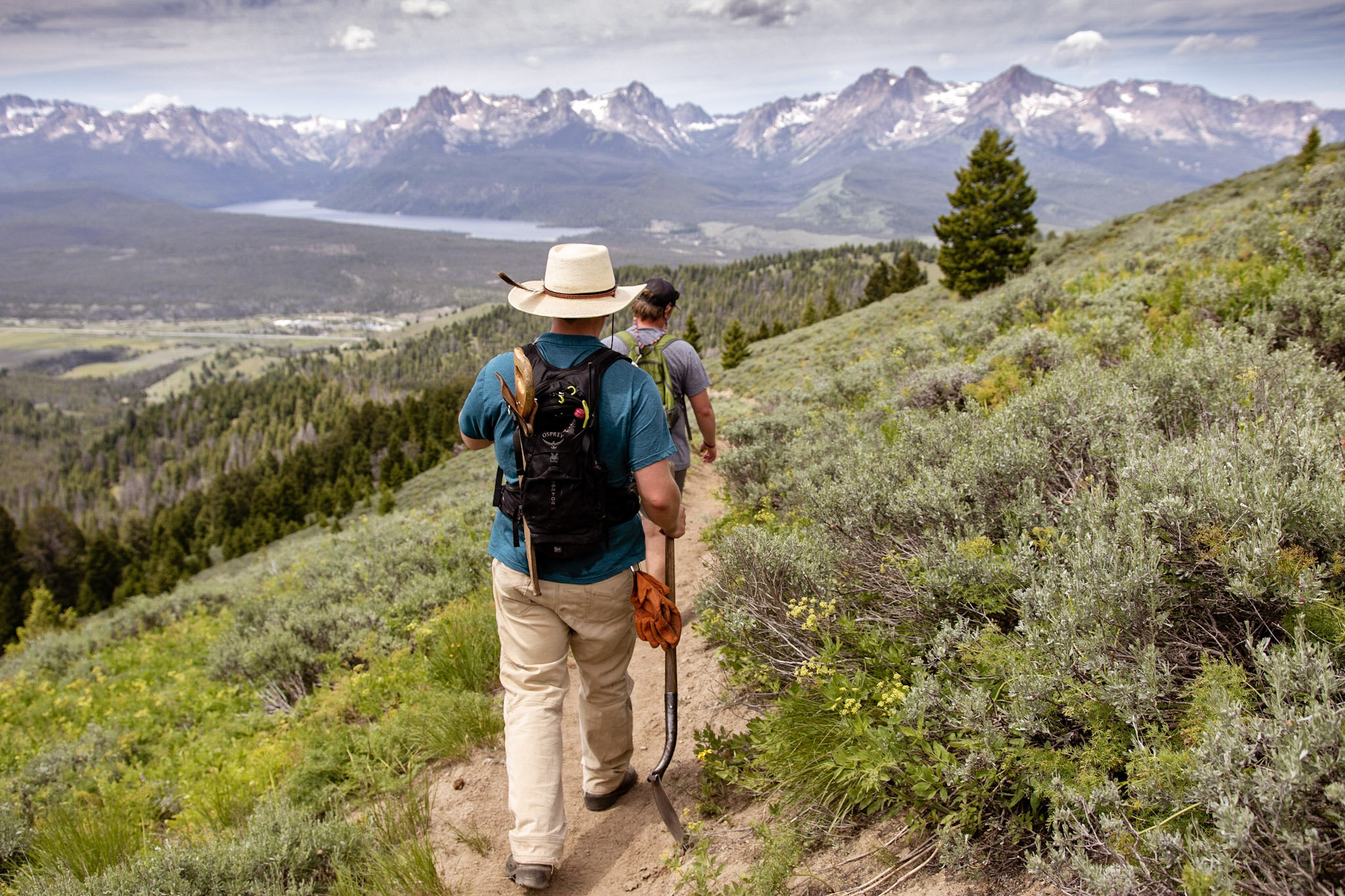Dalton in his favorite spot near the top of Boundary Creek Trail. A truly perfect view of the Sawtooths.
Over the fourth of July I was invited up to stanley to camp and see a bunch of old friends from college. If you know me at all you know that I’m actually obsessed with this place. Whether it is the mountains, the cold nights, the memories made there, I seem to be addicted to landscape and wilderness here. Two of my good friends Dalton Warr and Kit Foster are one of the trail crews in charge of clearing the trails and maintaining the this beautiful recreation area. So when I got invited to tag along and clear the trails I was all in.
Both Dalton and Kit work for a non-profit called The Sawtooth Society which was created in 1997 to exclusively: serve as the advocates for the Sawtooth National Recreation Area (SNRA), preserve the open spaces, enhance the recreation facilities and services, and facilitate stewardship and volunteer projects in the SNRA. Since 2013 89 volunteer projects have happened with a total of 900 participants logging nearly 7500 hours of volunteer time. These people are really the stewards of the Sawtooths and it was fun being able to do some trail work and capture the work they do.
Among the many amazing things the Sawtooth Society does, the most notable impact they have, in my opinion, is clearing the trails in and out of the wilderness boundary every year. With steep elevation grades and lots of deadwood due to fire and disease this maintenance takes a lot of work from devoted people. During the two “short” days I spent with them we did both tree clearing and maintenance of the drainages on two popular trails.
The first day we spent at Stanley Lake clearing a section of the Alpine Way Loop that stretched in between Iron Creek and Stanley Lake. The major job on this trail was the downed timber scattered across the trail. Since the Alpine Loop is in the wilderness area no mechanical machinery is allowed at all, this poses a problem when there is a two foot thick log on the trail. For this the forest service uses large 6+ ft crosscut saws from the early 1900s. Not only are they completely hand driven but actually quite efficiently and are great tool to replace any chainsaw. You may ask why are they from the early 1900s well it’s because the machinery/forges to make these don’t exists anymore. It turns out that after the chainsaw was invented these forges were melted down and there is not enough demand to make them again. The saw the we used was actually one of seven found in some guys basement and restored by a special group of people in the forest service that still know how to sharpen and services these old blades.
The second day, which I truly helped with, was up Boundary Creek Trail a steep 2.9 mile trail with about 2600 ft of elevation and we had around 120 drainage steps to clear. It was a steep hike but with 8 people the work time was cut to just 3.5 hours which helped Kit and Dalton a ton. It was truly a gift to be able to give back to this wonderful place. Ever since I took the Winter Wilderness Class I’ve been trying to get back and do more than just hike and take pictures. I hope to make a tradition of going up to Stanley and doing a day with this special crew. For more information or if you are interested in volunteering yourself click the box below to get to the Sawtooth Society website.





